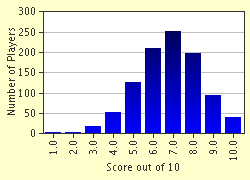Quiz Answer Key and Fun Facts
1. What is a bright streak of light seen in the sky?
2. Light travels at 186,282 miles per _______________.
3. What is a depression on a terrestrial planet or satellite called?
4. The uppermost region of the Sun is called the?
5. A medium sized icy solar system object is called a?
6. What is a fireball that produces a sonic boom called?
7. What is the brightness scale of stars called?
8. 3.26 light years is called?
9. What is a bright region in the Sun called?
10. What is the technical name for the motion of an object that orbits backwards around another object?
Source: Author
almach
This quiz was reviewed by FunTrivia editor
crisw before going online.
Any errors found in FunTrivia content are routinely corrected through our feedback system.


